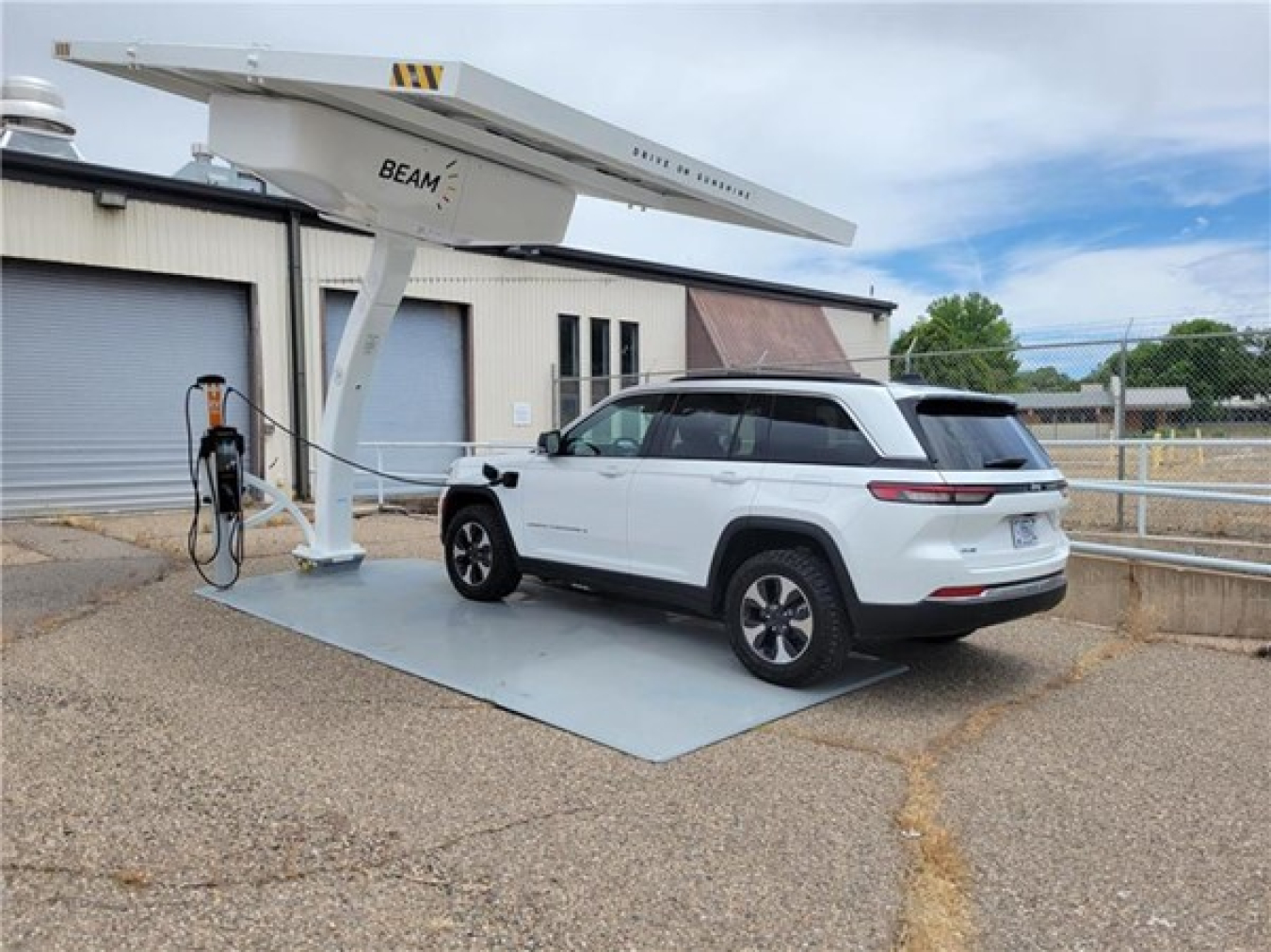LM honored for Outstanding Climate Resilience Project in Wyoming disposal site’s regenerative grazing study
August 20, 2024
Ensuring the future protection of human health and the environment is the Department of Energy (DOE) Office of Legacy Management’s (LM) primary objective. LM uses beneficial reuse for legacy sites as one method to manage land and assets sustainably.
LM’s beneficial reuse efforts refer to the productive use of an LM-managed site that no longer has a DOE mission after remediation, by LM or other entities, while being protective of human health and the environment.
For example, at the Rocky Flats Site near Denver, DOE successfully transformed a contaminated former nuclear weapon production plant into a conservation resource that enhances and protects critical habitat for a federally listed threatened species and several other rare plant and wildlife species. At the Grand Junction Processing Site in Colorado, a former uranium processing facility has been transformed into the beautiful, city-owned, mixed-use park at Las Colonias.
Throughout the years, LM has been recognized for its accomplishments in environmental restoration, remediation, conservation, and overall beneficial reuse. LM’s focus on beneficial reuse at the Shirley Basin South Disposal Site in Wyoming, the Tuba City Disposal Site in Arizona, and with the Zero Emissions Vehicle Charging Station Infrastructure Project across five LM locations and four states demonstrates a comprehensive and committed approach to environmental stewardship and sustainability.
The regenerative grazing study taking place at the Shirley Basin South Site is another successful example of LM’s beneficial reuse efforts. LM was selected to receive a 2024 Department of Energy Sustainability Honorable Mention certificate for an Outstanding Climate Resilience Project.
Initiated in 2019, the long-term study aimed to sustainably manage and optimize the use of land and assets through regenerative agriculture.
At the Shirley Basin South Disposal Site, LM is using agricultural reuse by way of a livestock grazing agreement. Through regenerative grazing management, livestock grazing increases land production, increases nutrient cycling, and strengthens soil health. Results outlined in 2023 indicate regenerative grazing management both increases plant diversity and stores soil carbon, thereby promoting increased health of ecological systems.

This study not only outlines LM’s beneficial reuse efforts but also explains the importance of collaboration to achieve meaningful results. Regenerative agriculture is a long-term approach that requires coordination with many stakeholders, including the Medicine Bow Conservation District, university researchers, and ranchers.
LM’s sustainability and beneficial reuse efforts haven’t been limited to the Shirley Basin South Site. In 2010, LM constructed a 51 kilowatt (kW) direct current solar photovoltaic system at the Tuba City Disposal Site in Arizona to support remediation efforts and provide renewable power for the groundwater treatment unit and extraction wells. The energy not used on site is provided to the Arizona Public Services (APS) grid for redistribution elsewhere in the community and state.
To boost the site’s capacity to produce renewable energy, LM worked with the Navajo and Hopi Tribes to add an additional 285 KW solar array on site. The EPA recognized these improvements in 2024 with its Federal Facility Excellence Award, citing exceptional work of remediating sites for beneficial reuse.
With a recent average yearly production of 528 megawatts (mW), the solar photovoltaic system has produced 5,217.4 mW of sustainable energy since going online. A total of 1351.5 mW of solar power were produced in 2021 at all LM locations. Of that, the Tuba City site generated around 47% of the total renewable energy from LM sites. Over the course of the system’s existence, it has generated enough energy to power 606 households for 1 year. Additionally, net offset of energy shows 2.8 million pounds of carbon dioxide were prevented from reaching the atmosphere.

Another LM sustainability initiative is the LM electric vehicle charging station (EVCS) infrastructure project, which demonstrates LM’s commitment to transitioning to zero emissions vehicles (ZEV).
Initiated in March 2022, the project has grown exponentially and successfully. What began as the installation of nine EVCSs at various LM locations has culminated in a total of 24 charging station ports and 12 EVCSs. Four of the 12 EVCSs are charged from a solar panel array with battery backup (see photos of the Beam EV ARC units). In October/November of 2024, a fifth Beam EV ARC unit will be installed at the future Weldon Spring, Missouri, Employee Parking Lot. Currently around 9% of the LM General Services Administration Fleet comprises ZEVs.
Per the federal mandate, LM’s ECVS project has the Office on track to meet the goal to switch from internal combustion engines to ZEVs, and therefore cleaner energy. On-site charging capabilities also encourage federal and contractor employees to use fleet ZEVs for business travel.
These combined efforts are just some of LM’s beneficial reuse initiatives. LM also continually looks for opportunities to partner with other groups or agencies to identify and support potential reuse opportunities.

